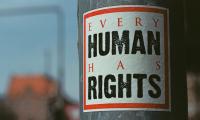About
The Right to Defend Rights is a tool to systematically monitor progress on the enabling environment for human rights defenders in accordance with human rights norms and standards.

The Right to Defend Rights is a monitoring tool which uses human rights-based indicators to systematically monitor the enabling environment for human rights defenders. These indicators are the basis for two sets of assessments which facilitate data collection at (a) national level and (b) for specific groups of human rights defenders.
The tool aims to address current limitations in the global SDG monitoring framework for effectively assessing progress in the enabling environment for human rights defenders and civic space based on a comprehensive set of related human rights standards.
The monitoring framework is anchored in the United Nations Declaration on Human Rights Defenders and operationalizes the monitoring of the rights and freedoms underpinning the Declaration and protected by binding human rights law. For this purpose, structural, process and outcome indicators have been developed to support monitoring in five critical areas (or categories):
-
General protection, promotion and enjoyment of human rights and fundamental freedoms
-
Freedom of expression and opinion
-
Freedom of association and assembly
-
Participation in public affairs
-
Liberty and security of person
These indicators are the basis for two sets of assessments which facilitate data collection (a) at national level and (b) for specific groups of human rights defenders.
Who can use this tool?
This tool can be used by stakeholders from all sectors. These include state institutions with a mandate to collect data on human rights defenders as well as academia, think-thanks, non-governmental organizations, and human rights defender groups who wish to perform a comprehensive monitoring of the enabling environment for human rights defenders in a country or sub-national region. For example, it could be a national human rights institution, ministry of justice, statistical office, university, national networks of human rights defenders and small groups or organizations of human rights defenders.
There are two types of assessments in the monitoring tool: a national and a group assessment. The user can decide which is more adequate for their monitoring efforts and scope of their work. Learn more about the assessments here.
What happens to the data collected?
The tool facilitates data collection and data visualization and offers a data repository.
Once the data collection process is finalized, the system generates a report which summarizes the responses and indicates how well the country is doing in ensuring an enabling environment for human rights defenders (for the specific group(s), organization(s) or in general), depending on the scope of your data. This report can be used to complement monitoring and reporting efforts to national and international human rights and SDG bodies and processes on these issues, for national stakeholder dialogue or advocacy, and for strategic planning purposes based on the gaps identified in the data collection.
Provided that the data has undergone a mandatory step of peer-review (read more on the step n.8 of the User Guide), the user has the option to publish the data about their group, organization, or country. This is optional but recommended because the more public data there is, the easier it becomes to identify strengths and weaknesses in countries’ abilities to ensure an enabling environment for human rights defenders.
